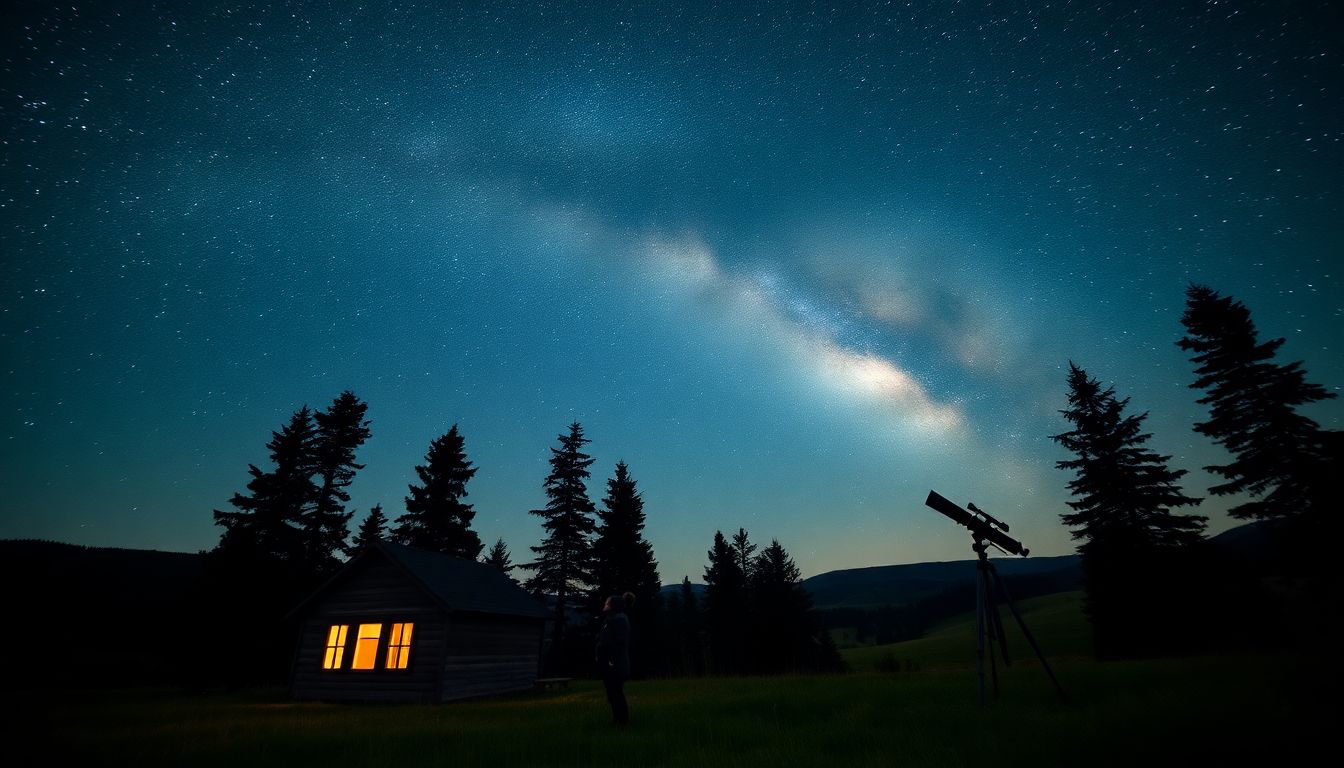
What To Know Before Watching the Night Sky in the Country
Introduction
Imagine lying on a blanket under a sky full of stars. In the countryside, this sight can be stunning. Clear skies and dark surrounds let you see so much more than in city lights. Many people love nighttime adventures like stargazing and astrophotography. But before you head out, it’s smart to prepare. Knowing what to expect can make your night safer, more fun, and full of amazing discoveries.
Why the Night Sky Looks Different in the Country
Natural Conditions That Affect Visibility
When you’re far from city lights, the night sky becomes clearer. Light pollution from street lamps and buildings dims the stars. In rural areas, less artificial light means brighter stars and more planets. Weather and the atmosphere also play a role. Humidity or haze can block your view of distant objects.
Benefits Over Urban Environments
Studies show that rural areas have much lower light pollution. The Dark Sky Association reports less interference in the countryside, making it easier to see constellations, meteors, and planets. In cities, bright lights often hide celestial sights. The difference is huge—rural skies are like a window into space.
Limitations to Be Aware Of
Weather can still spoil your night. Fog, rain, or clouds block your view of stars. Seasons also matter; some constellations aren’t visible every time of year. Planning your trip for a clear, dry night will get you the best view.
Essential Equipment and Tools for Rural Night Sky Watching
Basic Gear for Beginners
Start with a good pair of binoculars or a simple telescope. They make distant objects clearer. Use star maps or mobile apps like SkyView or Stellarium. They guide you through the night sky, helping you find planets and constellations.
Advanced Tools for Enthusiasts
More serious stargazers may want dedicated astrophotography gear. Special cameras and tracking mounts capture images of the Milky Way or planets. Portable power supplies and comfy chairs can also improve your experience.
Safety and Comfort Accessories
Carry a small flashlight with a red filter. It keeps your night vision intact. Dress warmly if it’s cold outside. Bug spray and sturdy shoes are also smart choices. Navigation tools like compass apps help keep you on track.
Best Practices for Safe and Enjoyable Stargazing
Planning Your Outing
Pick the best seasons for star viewing—usually winter or fall. Nights without moonlight give better visibility. Always check the weather forecast; avoid cloudy or rainy nights.
Safety Tips
Tell someone where you’re going and when you’ll return. Stick to safe, flat areas away from steep drops or water. Bring a first aid kit if you’re venturing into remote spots.
Ethical and Environmentally Conscious Observing
Respect local wildlife and the environment. Use minimal lights and avoid disturbing animals. Keep your area clean. After your night, leave no trace so others can enjoy it too.
Recognizing Celestial Events and Constellations
How to Identify Stars, Planets, and Constellations
Learn the basic shapes of key constellations. Orion’s belt and the Big Dipper are easy to find. Use star charts or apps for help. Remember, stars seem to move as the Earth spins, so try to find patterns.
Upcoming Unique Events Worth Witnessing
Meteor showers happen at specific times each year. The Perseids in August and Geminids in December produce bright streaks across the sky. Keep an eye out for planet conjunctions or lunar eclipses, which can be big spectacles.
Expert Insights
Astronomers say understanding how celestial bodies move makes stargazing more fun. Learning a bit about planetary orbits and star lifecycle helps you appreciate what you see. It turns a simple night into a lesson from space.
Enhancing Your Experience with Astronomy and Nighttime Nature
Incorporating Storytelling and Mythology
Many stars have stories behind them. Constellations like Orion or Cassiopeia have myths from ancient times. Knowing these tales can make your night more interesting.
Nighttime Wild Animals and Natural Phenomena
While watching the stars, listen for owls or coyotes. You might see natural light displays like the Milky Way or even the northern lights if you’re lucky. These add magic to your outdoor adventure.
Tips for Astrophotography and Capturing the Night Sky
Use a camera with manual settings. Start with a low ISO to avoid grain. Long exposures capture star trails and the Milky Way’s glow. Keep your camera steady on a tripod and experiment with composition to show the vastness of space.
Conclusion
Before you go star hunting in the country, remember these key points: gather the right equipment, pick a clear night, and stay safe. The countryside offers unmatched clarity and peace for night sky lovers. It’s a chance to see the universe in a way city folks never do. So plan well, respect nature, and get ready for a night of wonder under the stars. Your perfect stargazing adventure awaits.

